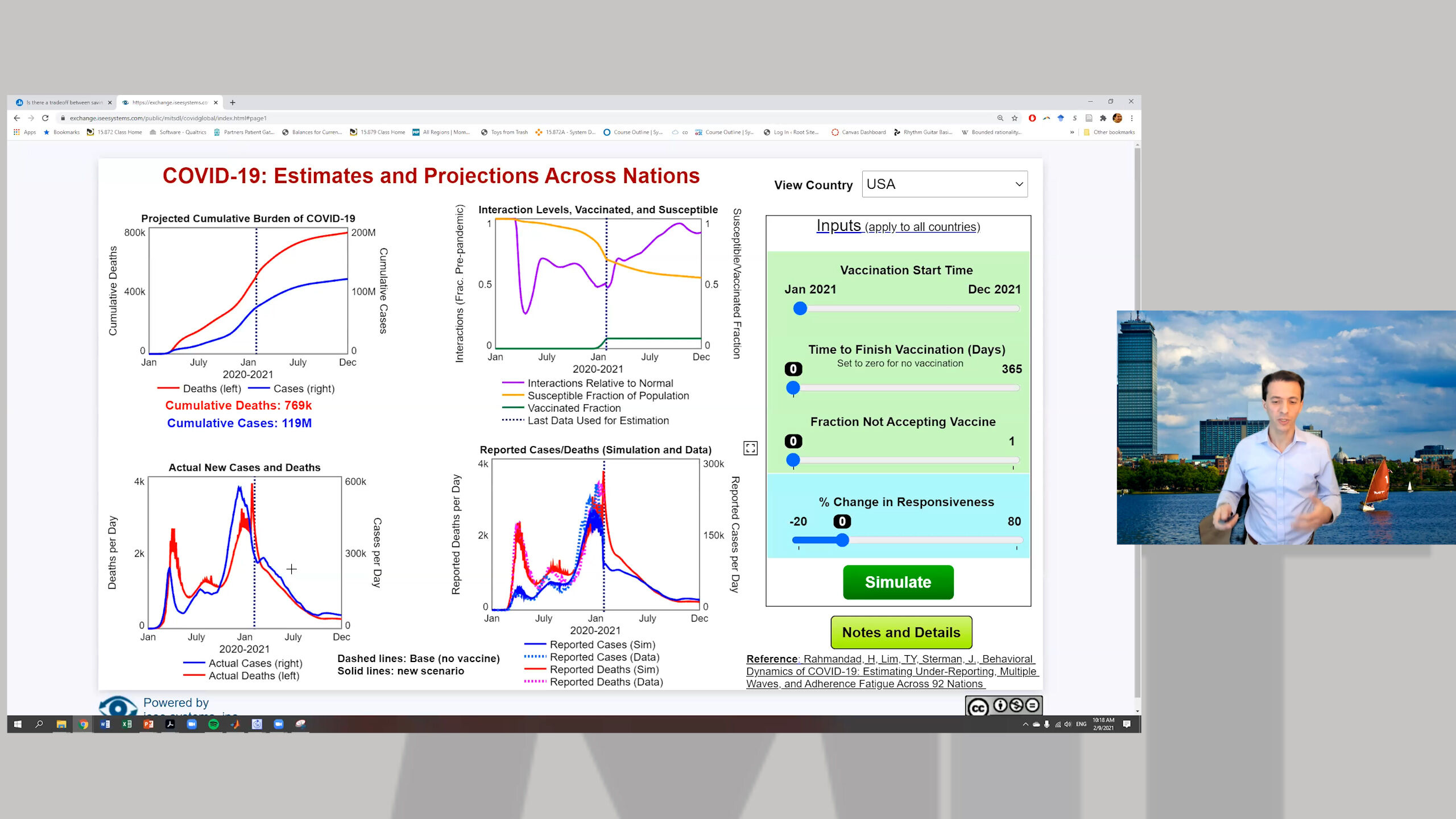During their recent webinar, MIT Sloan’s John Sterman, Hazhir Rahmandad, and Tse Yang Lim discussed their latest research and introduced a new interactive simulation tool that plays out different pandemic scenarios, including vaccination rollout timing and extent, behavioral reactions, and other factors. Below are some of the key takeaways. You can watch the webinar in full here on YouTube.
Putting the model to work to understand the future
Predictive modeling uses data and statistics to predict outcomes with data models – in this case, the model created by Sterman and researchers is used to predict outcomes related to COVID-19. The model is applied to every nation in the world that publishes enough data to enable estimation of the model parameters. As a result, this model is composed of 92 nations with a total population of about 5 billion people.
Using the simulator, the team demonstrated a few scenarios using varying inputs. They also showed how anyone can use this tool to explore the wide variations between countries and create various scenarios (toggle data between countries using the drop-down field in the top right corner). You can try the tool here.
Is there a tradeoff between saving lives and livelihoods?
The presenters tackled a key question: Is there a tradeoff between saving lives and livelihoods? Their research suggests that there isn’t a tradeoff between saving lives and saving the economy in response to COVID-19, and in fact there is a synergy between protecting lives and minimizing daily disruptions. For example, utilizing “test-trace-quarantine” proved to be more efficient than mass lockdowns.

COVID-19 Across Nations: One Pandemic, Many Trajectories
New research is presented along with a new interactive simulation tool that plays out different pandemic scenarios.
COVID-19 Across Nations: One Pandemic, Many Trajectories
New research is presented along with a new interactive simulation tool that plays out different pandemic scenarios.
Who should receive the vaccines first to minimize cases and deaths?
The data shows that communities with higher contacts have higher death rates. Therefore, vulnerable service worker communities, or those who have very high contacts and those who are unable to reduce their contacts (like first responders), should have vaccine prioritization. This would reduce the overall amount of deaths.
Achieving herd immunity
Herd immunity achieved by letting people become infected until 70-80% are presumably immune results in an unacceptable number of deaths and may not be a viable plan of action if new variants emerge that would allow reinfection. Herd immunity achieved via vaccination, however, can eventually halt the epidemic and limit deaths – especially if people continue to adhere to public health recommendations on masking, distancing, and if governments continue limits on gatherings.
Want to learn more from John Sterman?
You can learn more from John Sterman firsthand in his Executive Education courses:Business Dynamics, Strategies for Sustainable Business, and Understanding and Solving Complex Business Problems.
Guest post contributed by Courtney Burt.








